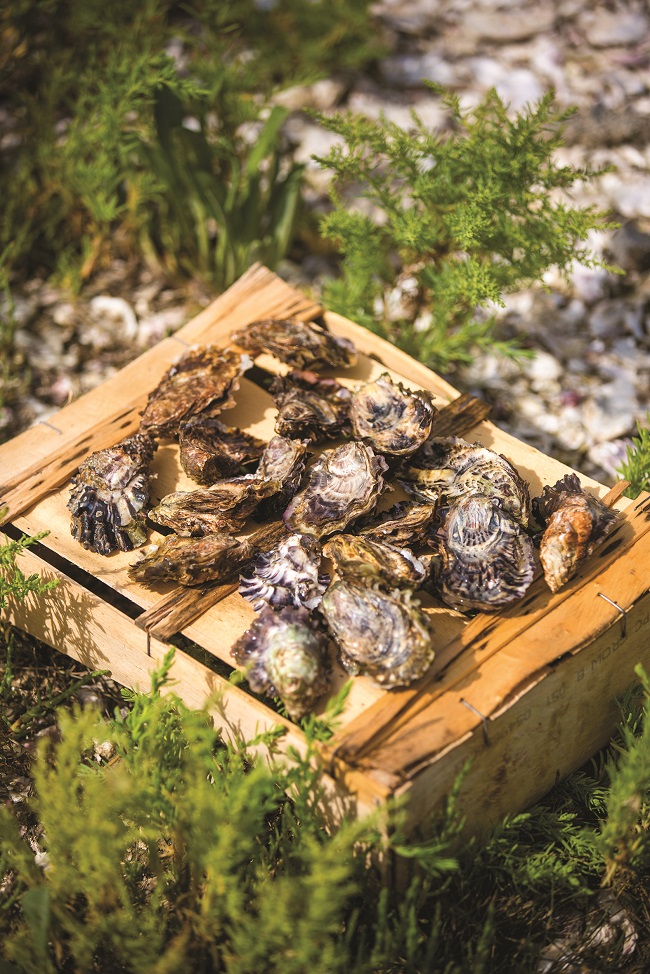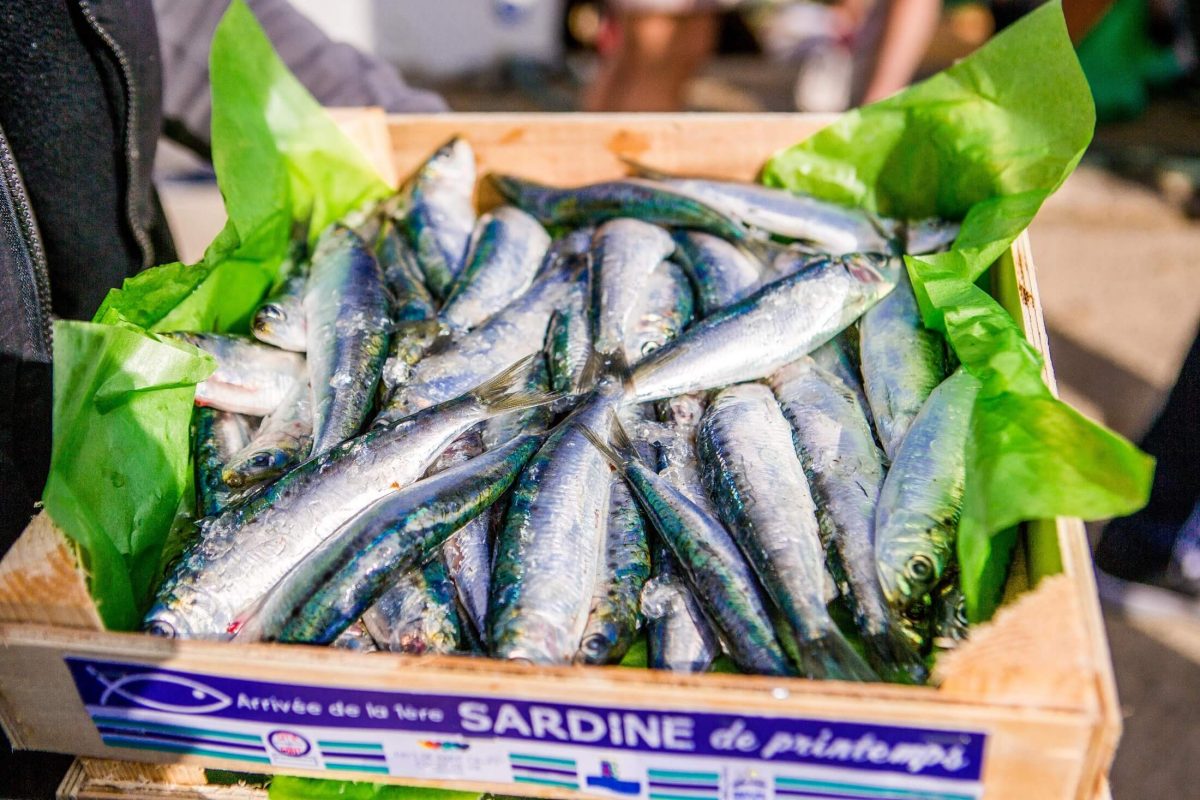The Vendée: the Place to Be for Foodies
Sponsored
Beyond its sun-kissed coastline dotted with long sandy beaches, the Vendée boasts a culinary heritage that is as diverse as it is delectable. From delicious local specialties to unforgettable foodie experiences, the Vendée has something on the menu for every traveller’s tastes.
Leading the way in protecting its own produce and recipes in France, the Vendée has also made efforts to highlight hyperlocal gastronomy through a ‘homemade’ label called “Cuisine Montoise”, safeguarding and sharing the recipes from the Pays de Saint-Jean-de-Monts which you can enjoy in 14 local restaurants.
Combine a hike or bike ride with some tasty stops by following along one of the Vélorégalade routes around La Tranche-sur-Mer and for those with a little more time in the area, the Route des Vins des Fiefs Vendéens and the Route de l’Huître Vendée Atlantique are yours to explore.

Noirmoutier- Les marais salants
Taste of tradition
The region’s gold lies not in the depths of the earth but in the ovens of its bakeries. Crafted and platted by hand since the Middle Ages, the Brioche Vendéenne is a staple of the area’s gastronomic traditions. Deliciously buttery, subtly infused with eau de vie or orange blossom, the brioche is especially enjoyed during the Easter celebrations but can also be spotted on the breakfast or goûter table. Traditionally, it was baked to mark big family celebrations and the godparents of a bride oversaw the making a huge brioche for the wedding. La gâche, another type of brioche which differs in that a dollop of crème fraîche is added to the recipe, making it denser than the brioche, also originates from the Vendée and both are protected by the IGP (Indication Géographique Protégée) label in France, a rare occurrence for baked goods.
Speaking of gold, l’or blanc of the Vendée can be found the many salt marshes that dot the area. The salt marshes still in operation perpetuate an ancestral craft to obtain the fine fleur de sel and sea salt, whether on the island of Noirmoutier, in the Breton Vendéen, Vie or of Olonne marshes or even in the Talmondais region.
View this post on Instagram
Seafood extravaganza
Given the Vendée’s extensive coastline along the Atlantic Ocean, it’s no surprise that seafood features prominently in the local cuisine. From the bustling fishing ports of Les Sables-d’Olonne to the tranquil fishing villages of Île d’Yeu, you’ll find an abundance of ocean-fresh treasures. Vendée Atlantique oysters are the stars of the show. Follow the Route de l’Huître Vendée Atlantique through five ports (including France’s smallest oyster-port) to discover the particular way of breeding oysters in the area and enjoy their uniquely fresh and salty taste. The Vendée’s oysters were in fact awarded two gold medals at this year’s National Agricultural Fair in Paris!
Mussels, langoustines, prawns, crabs and lobster are found too of course and a trip to the Vendée would not be complete without tucking into a bowl of “moules de bouchot” from the Aiguillon bay, where mussels are bred on thick oak wood poles driven into the sand. At low tide, the mussels bathe in sunlight while at high tide, they feed of the rich plankton in the water.

Vendée’s renowned oysters
Fishy feast
Fish could not be fresher in the Vendée and you must especially look-out for sardines from the port of Saint-Gilles-Croix-de-Vie. Introduced in the 18th century by the Moors, sardine-fishing completely changed the economic landscape of the region as the canning industry took off. Today, one cannery is left, the Conserverie Gendreau, but Saint-Gilles remains the sardine capital of the Vendée, the heart of the action being at the loud and lively fish auction market.
Head to the fish market in Les Sables-d’Olonne to buy the catch of the day which can include sole, known as “sablaise” in the area, monkfish, turbot, hake, whiting and more.
Tours of these two fish markets are available to uncover all their secrets but don’t miss out on the other weekly farmers’ markets taking place in other towns.

Saint Gilles sardines © S. Bourcier
Room for more?
Of course, it’s not just fish and seafood you can indulge in in the Vendée. Apéritifs are known not to start without préfou: bread garnished with butter and garlic (the traditional recipe), but also goat’s cheese, Roquefort, sun-dried tomatoes, chorizo…
Meat-eaters will love the poultry specialties, including canard de Challans, and the traditional jambon-mogettes dish of ham and white beans that has seen many, if not all, Vendéens gather round the family table. Gourmets and chefs love Noirmoutier’s star-potato, la bonnotte, which is hand-picked and only produced in limited quantities because of how rare it is.
View this post on Instagram
Something for the sweet teeth
This being France, pastries and desserts come in abundance in the Vendée, beginning with the fion, an egg-based flan caked surrounded by a crust. It’s also known as un flan maraîchin and is very present around Easter.
Prune tart is also much-loved in the Vendée and is a specialty from the Île d’Yeu, traditionally served at weddings. While you’re on the island, make sure to buy a packet of the cutely-named Minmins caramel sweets, flavoured with prunes and sea salt.
From the Vendée marshes comes the fouace, a rather dense cake infused with orange blossom or alcohol. And for the Mardi Gras celebrations, purchase some sugar-coated fritters called foutimassons (also known as bottereaux, merveilles or tourtisseaux) and try not to finish a whole bag for yourself.
View this post on Instagram
Cheers to the Vendée’s tipples
Blessed with a warm climate, the Vendée boasts five wine-producing territories under the umbrella of a unique AOC (Appellation d’Origine Contrôlée): Fiefs Vendéens. Hit the Route des Vins and explore Brem ocean-side, Chantonnay and Mareuil in the centre and Vix and Pissotte in the south-east.
Hop onto a bike and pedal along one of the loop routes that explore the Vendée’s vineyards and allow you to meet the winemakers and taste their produce.

Explore de Route des Vins des Fiefs Vendéens
Food festivals in the Vendée to look-out for:
- La Semaine du Goût – In the fall, during the national Semaine du Goût celebrations, chefs offer menus at reduced prices to help you discover or rediscover local Vendée products.
- Noirmoutier Island’s Bonnotte Festival – Every year, the Noirmoutrins celebrate the harvest of the famous bonnotte, the island’s much-loved potato. Every first Saturday in May, the island comes alive with a host of animations and activities: watch the harvest, take part in a bike rally, tuck in to a typical Vendée dinner and enjoy concerts that last into the night.
- The Sardine Festival – In the spring, the town of Saint Gilles Croix de Vie comes alive for the arrival of the blue fish. All kinds of activities take place from culinary workshops and exhibitions, to sea trips with the fishermen, to guided tours of the Criée fish market. Not forgetting, of course, tasting the first sardines of the season!
- Agricultural Fair – As summer comes to an end, the agricultural festival is organised by young farmers from Vendée with a new theme in mind for each edition. Held in a different location each year, the atmosphere, on the other hand, is always good. Watch old-fashioned threshing demonstrations, concerts and sit down for a real country meal.
Lead photo credit : The freshest seafood platters © S. Bourcier
Share to: Facebook Twitter LinkedIn Email
More in Food, French food, french gastronomy, gastronomy, Vendée
Leave a reply
Your email address will not be published. Required fields are marked *





